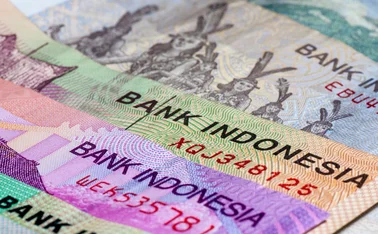
Renminbi internationalisation – The new dollar?


In the 21st century – especially since the 18th National Congress of the Communist Party of China (CPC) in 2012 – China’s economy has accelerated its integration with the rest of the world. Offshoring renminbi began with cross-border trade settlement and has expanded its international usage by successfully joining the International Monetary Fund special drawing rights (SDR) currency basket. The success of renminbi internationalisation has manifested itself in four ways.
First, the renminbi’s payment function has become widely accepted. Since the beginning of 2019, the proportion of renminbi held in foreign currency cross-border receipts and payments has exceeded 30% – the highest level in history. The renminbi has also become the second-largest international payment currency in China for eight consecutive years. The proportion of international payments in renminbi reached 2.22%, ranking fifth worldwide.
Second, the renminbi’s functions in investment and financing have been consolidated. By the end of September 2019, foreign institutional investors held 2.5% of the total amount of bonds entrusted in China’s interbank bond market, and 3.9% of the total market value of A-shares in circulation.
Third, the valuation of the renminbi continues to improve. Foreign trade, investment, international balance of payments and other statistics have been denominated in renminbi, and SDR bonds have been successfully issued. Commodity futures – including crude oil and iron ore – have been priced in renminbi and introduced to overseas traders. This has increased the renminbi’s pricing power.
Fourth, the reserve function of the renminbi has transpired gradually. The renminbi is now the world’s fifth official foreign exchange reserve currency, with more than 70 central banks adding the currency to their reserves. The share of renminbi in terms of forex reserves now stands at 2%.
Potential for development
At a macro level, China’s sustained and sound economic development and steady financial opening-up have laid a solid foundation for the renminbi’s internationalisation. Whether a currency can grow into an international currency depends fundamentally on the status and influence of the issuing country within the global economy and the confidence of the international community in it.
After the global financial crisis that began in 2007–08, China’s economy took the lead in recovery and maintained a high growth rate. The renminbi is a high-interest currency and generally remains strong. At present, China’s economic and financial fundamentals are sound: its economic structure has been continuously optimised; endogenous driving forces and resilience have been significantly improved; the balance of international payments are generally in equilibrium; forex reserves are sufficient; monetary policy remains stable and neutral; the renminbi exchange rate is able to fluctuate in both directions; and the steady development of renminbi internationalisation has solid macro support.
History shows that the most fundamental and main driving force of renminbi globalisation is the demand of market players to use it in trade and investment. As long as China remains an active trading partner, demand for the global use of renminbi will continue. The international use of renminbi has also provided enterprises and individuals with an alternative to the US dollar, reducing exchange costs and exchange rate risks, improving the efficiency of cross-border capital settlement, diversifying asset risks and providing diversified asset allocation options.
Considering the development of China’s open economy and the demand of domestic and foreign investors, renminbi globalisation still has room for improvement. This is especially the case for investment, trading and reserves. For example, by the end of September 2019, total bond market custody in China was close to CNY100 trillion – already the second largest worldwide. Foreign investors held about 2.5% of bonds, far below the level of more than 20% in other developed economies and below the level of 10% in emerging markets.
Three principles of renminbi internationalisation
At the Fifth National Financial Work Conference in 2017, President Xi Jinping insisted the growth of renminbi internationalisation should be steady. The outline of the 13th Five-Year Plan (2016–20) also made it clear the renminbi should be convertible under the capital account in an orderly way, which would improve the degree of convertibility and flexibility, steadily promoting renminbi adoption overseas. The Fourth Plenary Session of the 19th Central Committee of the CPC, which concluded in October 2019, reinforced this discreet and steady approach.
Looking to the future, the People’s Bank of China and the State Administration of Foreign Exchange (Safe) of the People’s Republic of China will actively, yet prudently, accelerate renminbi internationalisation in accordance with unified arrangements set out by central government, focusing on the following three principles:
1. Market-driven and demand adaptation. Renminbi internationalisation is a natural and historical process. China should be guided by the principle of serving the real economy and facilitating trade and investment, and in line with the reasonable demand of market subjects. Renminbi promotion will therefore be achieved smoothly.
2. Fair competition. The policy framework and financial infrastructure for the cross-border use of the renminbi should be further improved to create a level and fair playing field on which the currency can compete with other convertible currencies.
3. Good governance. China will not stop its financial reform and opening-up strategies. In addition, China will co‑ordinate its renminbi internationalisation and reform programme, and will open up by establishing an exchange rate mechanism, promoting capital account convertibility, strengthening capacity building in financial regulation and completing the macro-prudential management policy system.
China’s financial reform programme and its aim to open-up to the rest of the world cannot be achieved without the wisdom and care of both the financial and business communities. Renminbi internationalisation has sailed successfully for a decade. The People’s Bank of China and Safe are ready to continue to work with all parties to forge the stable and sustained development of China’s local currency.
Only users who have a paid subscription or are part of a corporate subscription are able to print or copy content.
To access these options, along with all other subscription benefits, please contact info@centralbanking.com or view our subscription options here: http://subscriptions.centralbanking.com/subscribe
You are currently unable to print this content. Please contact info@centralbanking.com to find out more.
You are currently unable to copy this content. Please contact info@centralbanking.com to find out more.
Copyright Infopro Digital Limited. All rights reserved.
As outlined in our terms and conditions, https://www.infopro-digital.com/terms-and-conditions/subscriptions/ (point 2.4), printing is limited to a single copy.
If you would like to purchase additional rights please email info@centralbanking.com
Copyright Infopro Digital Limited. All rights reserved.
You may share this content using our article tools. As outlined in our terms and conditions, https://www.infopro-digital.com/terms-and-conditions/subscriptions/ (clause 2.4), an Authorised User may only make one copy of the materials for their own personal use. You must also comply with the restrictions in clause 2.5.
If you would like to purchase additional rights please email info@centralbanking.com







